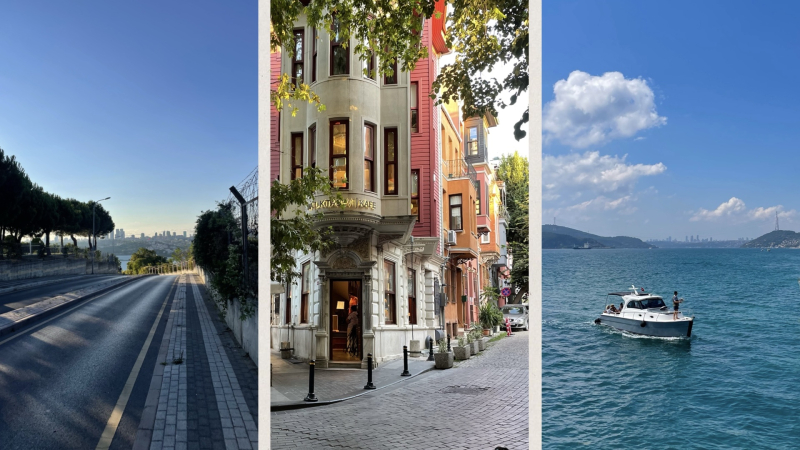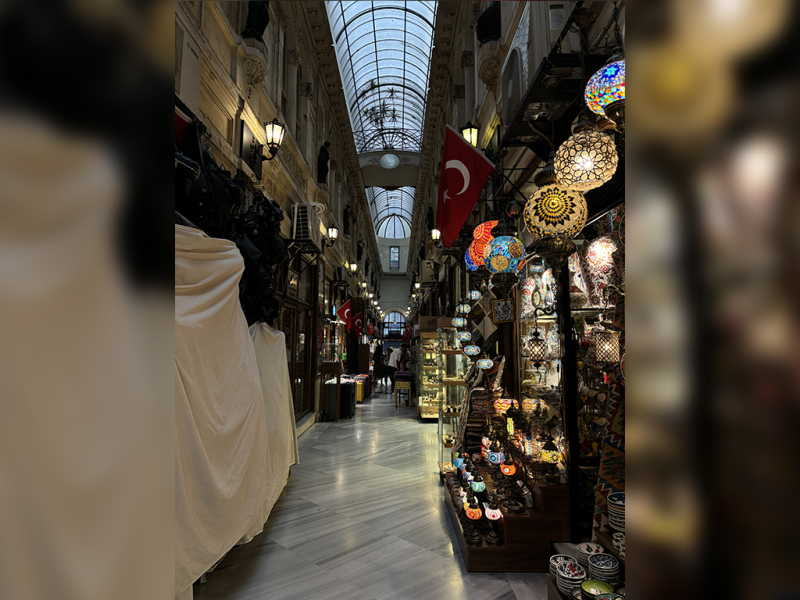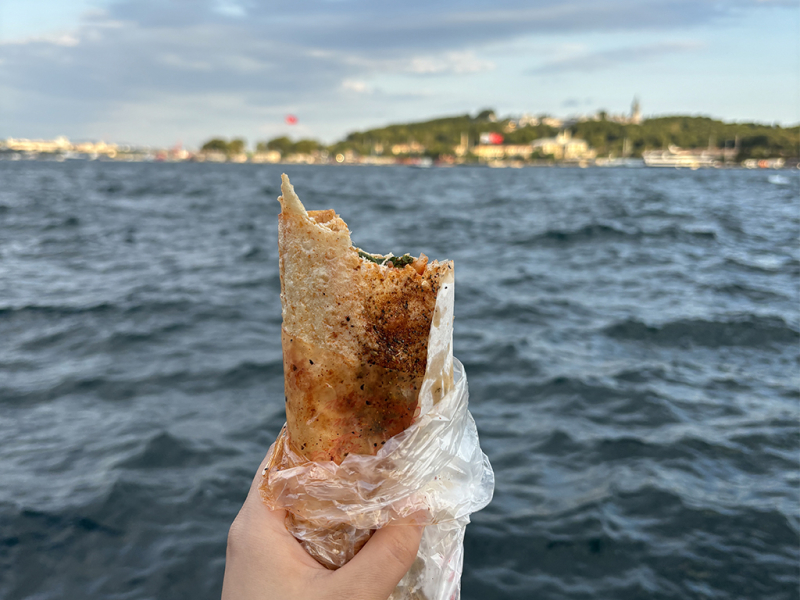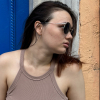Our Summer Studies in Istanbul: Part 3
Welcome to the third part of our story about our experiences at the "Delightful Istanbul 2024" Summer School. Catch up on Part 1 and Part 2 — and read on!

Places, people and foods
To begin with, every day we had in Istanbul was very eventful, because we wanted to see as much as possible and literally did not have enough time to sleep, but this is the price of our wonderful memories. Most of our activities were in the evenings or afternoons, because mornings were dedicated to classes, then we explored the city and returned almost at night.
On the first day, we looked around the neighborhood near the place of the hotel and the university. It is a fairly peaceful area with a large number of students and locals who mostly spoke only Turkish. There was a mosque in almost every district and ours was no exception. At the mosque, we tried Ayran (a very popular drink), which a Russian-speaking local helped us buy. We talked about life with him and shared our positive impressions about our studies. Sometimes we also tried to speak Turkish, an effort that was appreciated by the locals.
Then we explored popular areas and attractions. For example, the Taksim district and Istiklal Street. There, we climbed the Galata Tower, enjoyed a San Sebastian cheesecake, bought accessories, visited a modern art gallery, and also visited the beautiful Church of St. Anthony of Padua.
Another day we were in the landscaped Yıldız Park with its beautiful palace, but unfortunately we didn't have time to get inside. If you do not want to stand in a long queue, it is better to visit such places early in the morning. After the park, we took a ferry ride, enjoying the setting sun. For about three days we were looking for a place where we could try something special, namely balık ekmek or balık durum (fish in a pita or bread). Finally, we found it and ate it on an embankment with our friends. We also tried roasted chestnuts and almonds, baklava, Turkish delight, kebabs, and kahve (Turkish coffee) — it was all incredibly tasty.
On the fourth day, we went to the Büyükçekmece beach. The trip took us about an hour, but we were able to swim and sunbathe there. The beach was clean, free, and with few people, so we highly recommend it.
We also visited the famous Balat district with colored houses, the Nişantaşı district with boutiques and shops, the Üsküdar district with its incredibly beautiful architecture and small streets, and the Spice bazaar. And even went to an international nightclub! An interesting fact is that every district of Istanbul feels like a completely different city. First you're in Turkey, and later it's like you're in Italy.
During our stay in Istanbul, we visited many mosques, one of which was the famous Ayasofya. The feeling of being inside such an old place is indescribable.
We also had two free tours from the Delightful Istanbul School. On the first tour, we visited the Blue Mosque, Cisterna Basilică and Topkapı palace, and on the second boat tour we danced on a boat and sailed in the İstanbul Boğazı (Bosphorus).
While we were walking, we managed to communicate with the locals. Someone told us about life here, another person explained the religion of Islam to us, and with someone we just sang on the bridge at night. All the locals we talked to were friendly and wanted to communicate, even if we didn't understand each other well because of the language barrier. And everyone was always happy to show us the way and generally help with any issue. So don't be afraid to initiate the conversation if you go to Istanbul!
There are a lot of places to see in Istanbul, but it definitely takes more than two weeks, so we learned to prioritize.
Our summer school ended with an official ceremony and celebration on the boat, where we danced and enjoyed ourselves, but the best part was having the chance to chat with everyone in order to keep fragile memories in our hearts!

Turkey's prices
We all had questions about what currency to take and whether we needed a bank card. So here's our experience — not claiming to have the ultimate truth, but what we found to be most useful.
We traveled in July and August 2024, when the Turkish lira was roughly 3 to 1 against the ruble (1 lira = 3 Russian rubles).
Russian cards are practically useless in Istanbul. Union Pay also wasn't widely accepted. If you have a foreign bank card, definitely bring it — it's way more convenient than carrying cash, especially since the largest Turkish banknote is 200 lira (about 600 rubles).
The only currency accepted in Istanbul is the Turkish lira (TRY, TL). You won't find many places that accept dollars, and while you can pay with euros, you'll get change in liras.
Even if you have a card, keep some cash. You can exchange liras in Russia, but finding good rates in St. Petersburg can be tough. It's easier to take euros or dollars and exchange them in Istanbul. You can also take rubles, but you'll have fewer exchange options.
Inflation and prices in Turkey are high, but you can still travel on a budget. Many attractions are free, and you can find cheaper eateries or cook yourself.
Here's a rundown of approximate prices:
- Program fee (50% discount): $ 445 (40,000 rubles)
- Roundtrip flights (St. Petersburg — Istanbul, no checked baggage): 40,000 rubles
- Travel insurance: 1,000 rubles
ITMO University partially funded that part of our trip (70,000 rubles).
Transportation:
- Public transport: 17−25 lira (60−70 rubles) per ride
- Ferry to islands: 60 lira (180 rubles)
- Istanbul Card (transport pass): 130 lira (390 rubles)
We spent at least 1,000 lira (3,000 rubles) on public transport.
- Taxi: expensive. An hour-long ride from our hotel to the airport cost about 4,000 rubles.
Food:
- Kebab/Döner with Ayran near university (student-friendly area): 120 lira (360 rubles)
- Tourist area kebab: 400 lira (1,200 rubles)
- San Sebastian Cheesecake: 300 lira (900 rubles)
- Balık Ekmek/Dürüm: 140−160 lira (almost 500 rubles)
- University cafeteria lunch: 100 lira (300 rubles)
Supermarket prices are similar to Russia — some things are cheaper, some are more expensive.
Museum entrance fees are high (e.g., Galata Tower or Hagia Sophia — nearly 1,000 lira). We got Academic Museum Cards for free entry to state museums (including Galata).

Essential tips
ESIMs are cheaper than physical SIM cards: just make sure your phone supports eSIMs before you buy one. Russian roaming prices equal those of a Turkish SIM card, but data limits are many times less. Our friends bought a Vodafone SIM card — remember to say you're a student.
Ininal Card is a lifesaver! It's a virtual card, easy to set up using your international passport. You can then buy a physical card at many stores and link it to your account. It works like a regular debit card. The only catch is a monthly spending limit of 2,750 lira. However, you can visit their office (they have one in Istanbul) and get an unlimited one. You'll have a fully functional card, allowing you to pay for everything without carrying a ton of cash. You can use it back in Russia for online services.
Don't rely on Google Maps! We found Yandex to sometimes offer faster and more convenient routes. Compare your options and ask locals for advice — not all buses appear on the maps.
Bargaining. It's the norm! Don't be shy, ask for an "indirim" (discount). Double-check that prices are in Turkish lira. Always check at least three places before you buy something. If you're buying food like chestnuts or Turkish delight, ask for a sample. And of course, hit the markets for some free snacks!
As a woman, it's best to avoid walking alone at night. While Istanbul didn't feel scary, it's better to be safe, especially when it gets dark. Stick with a group, or even better, have a male companion. Maria found herself in Taksim at 1 a.m. and saw the "beautiful neighborhood" everyone warns about. She was glad to have her Polish friend with her!
Thanks!
And now we want to thank everyone involved. Thanks to our university for the short-term exchange opportunities. Thanks to Delightful Istanbul school for such an experience! Thanks to all the new friends we spent time with! Thanks to Istanbul for making us fall in love with it! And thank you, dear readers, for reading to the end!
Written by Mariia Tereshina and Alina Gadieva
